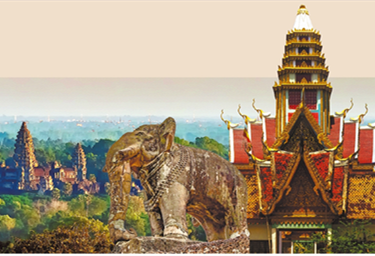Renovations preserve heritage of ancient city

The city wall and moat are new attractions in Datong, which is growing in appeal to tourists. [Photo by Li Yi for China Daily]
It is rare nowadays for people in China to find a city encircled by walls, although some 100 years ago such walls were a common sight at every city, or even county seat, in the country.
But Datong in the north of Shanxi province is one of the few places that retain its city wall.
When visiting the city, tourists are amazed by the 7.2-kilometer-long, spectacular city wall, which encompasses the ancient urban center covering 3.45 square kilometers.
As it looks no different to those well-preserved ancient walls in cities like Xi'an in Shaanxi province, Pingyao in Shanxi province, Xiangyang in Hubei province and Ganzhou in Jiangxi province, few tourists would be aware that the wall in Datong was rebuilt during this century.
Historical records show that Datong began to build its earliest city wall in the Western Han Dynasty (206 BC-24 AD) with renovations taking place in the following dynasties.
The current wall was built on the basis of the Ming Dynasty (1368-1644) city wall, which was said to be completed in 1372.
The Ming Dynasty wall was built using rammed earth and covered by fired bricks. It suffered severe deterioration in the last century with most of its bricks falling down and sections of its rammed earth wall collapsing.
The city wall's repair and renovation project started in 2008, which involved the enhancement of the rammed earth wall and applying bricks to the wall's exterior. The project was fully completed in November 2016.
The renovated wall now adds a new attraction to the ancient city of Datong, which is renowned for the landmark Yungang Grottoes, one of the top three famous Buddhist cave art sites in China.
There are unique resources on the city wall that appeal to many people, which include about 40 sets of ancient devices for attack and defense in wartime, such as two ancient cannons called Hongyi, chariots, wooden beams and other weapons that people could only see on screen. "These weapons indicate the time-honored history of Datong's city wall," said a tourist.
Datong has not only restored the old city wall, but also constructed a city moat park. Stretching around 2,000 meters long and 210 meters wide outside the eastern wall, the park has a land area of about 400,000 square meters. Now covered by lush trees and grasses and featuring deliberately designed landscapes incorporating both ancient and modern styles, the park is a popular destination for relaxing locals and sightseeing tourists.
Renovations have also taken place on historical sites inside the ancient city hub, including the old city government complex, the King of Dai's residence, and the Huayan and Kaihua Buddhist temples, as well as ancient streets and blocks.
Han Linfang contributed to this story.


